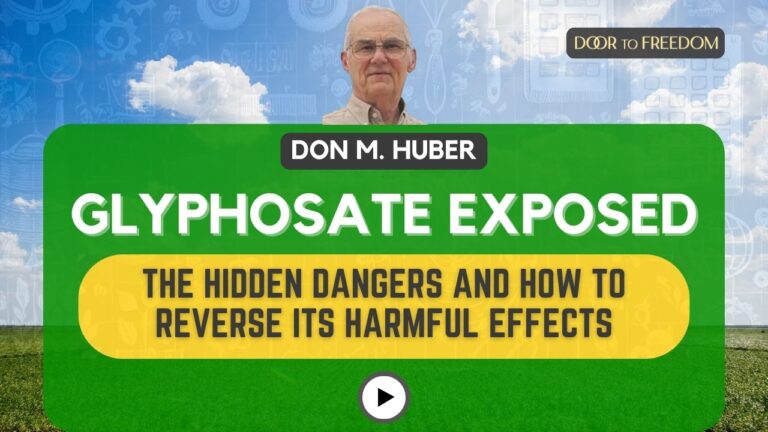The nation’s agricultural backbone is cracked.
This is a repost with permission from the author.
The consolidation of smaller farms into sprawling industrial food-rearing facilities has been witnessed by a largely unaware or uncaring society. Americans rallied to save the bald eagle and the spotted owl but have mustered little more than a platitudinal Farm Aid concert to reverse the decimation of the nation’s food-producing backbone. However, failing to save local farms is similar to ignoring honeybee die-offs: Humans can live without owls but not bees and the healthful foods they pollinate.
Current Farm-Bashing
Media reports sow ideas of insects for dinner, soy-burgers replacing beef, and the elimination of traditional agriculture in favor of space-age “solutions” to the supposed climate crisis caused by agriculture. Similar promises of transforming the post-World War II food supply for the Green Revolution used technology, genetic engineering, ubiquitous chemical applications to the land, and cutthroat marketing to eviscerate traditional farming, reduce food quality, and destroy the nation’s soil and water.
The circular marketing that offers humanity the same poison twice is classic doublespeak: Technology and corporate consolidation created cheap, toxic food that is killing the ecosystem as well as the children suffering from diabetes, obesity, and cancer at ever-higher rates. The solution — per Bill Gates, Klaus Schwab, John Kerry, and other globalist stooges for corporate hegemony — is to eliminate all farming by human hand and compel humanity to dine on patented synthetic creations churned from humongous factories.
The Allure of Cheap Food
Americans have been understandably dazzled by cheap food and promises of endless bounty. With an average household food budget of 9% of income — until recent inflationary pressures — the nation’s food is cheaper than any people’s in history. The selection of products from around the world and newfangled food creations, often flavored with chemicals lab-designed to stimulate taste buds or appetite, are additional temptations nurturing complacency about straw-hat farmers losing their intergenerational lands.
Now most of that acreage is gone forever. Commercial development and suburban creep have irrevocably absorbed huge swaths of former fertile farmland. Small farmsteads dropped first, but the greater impact on consumers has been the lesser-known demise of the medium-sized ones.
Much is made of the term “family farm,” but the label is illusory. Massive properties of hundreds of thousands of acres may still be “family-owned,” just as Cargill, Ford, BMW, and Walmart can be described that way. The USDA also counts all agrarian enterprises selling more than $1,000 in goods annually in its census data as “family farms” that, in GNP terms, contribute little. What counts is balanced operations, both economically and environmentally: Middle-sized farms serve that vital balance.
The Demise of Mid-Sized Farms
Much as wealth disparity has split the nation and withered the middle class, consolidation enabled by heavy subsidies and favorable regulation has erased America’s middle-sized farms. USDA reported:
“[T]he USDA said U.S. agriculture is increasingly divided into two groups: a large number of small farms that produce a small part of the nation’s food, fiber, and livestock, and a small number — fewer than 80,000 — of big operations that generate two-thirds of farm production. The number of medium-sized farms is shrinking … The National Sustainable Agriculture Coalition said the 2017 census showed that agricultural consolidation is driving medium-sized family farms out of business and concentrating wealth among large operators.
Subsidies for corn, wheat, soy, and other crops favor large-scale operators at the expense of lesser producers. These subsidies do not much impact farmers markets or roadside stands, which also avoid most of the costly and burdensome labor, environmental, and agriculture regulations that are easily borne by large enterprises but undermine the profitability of smaller operators.
Another creeping destroyer has been tax inflation. As land prices have increased, real estate taxes in many states have become stifling for farm entrepreneurs unless protected by land use or other relief programs. A backyard gardener is likely paying taxes already on a residential parcel with a garden, so any small income from farm sales is essentially earned free of any increment in real estate taxes. Large tracts generally carry a lower per-acre real estate tax burden; medium-sized farms thus bear the greatest tax burden relative to income, as their lands will likely be valued at current residential development value rather than raw agricultural land. These pressures especially undermine mid-sized operations close to affluent cities or suburban regions.
The result of these combined pressures has been an inexorable loss of human farmers, as food is reared in chemical-soaked plains or concrete feed lots, processed in multi-storied smoke-stacked labyrinths, and packaged for institutionalized distribution and eventual human consumption. The same forces that destroyed the local farm now label cows as threats while constructing massive polluting factories to supply synthetic, patented meat products and insect patties to schoolchildren, shaping their tastebuds for the future.
The “family farm” label is unimportant: Essential is whether food is local and produced at a sensible scale for the climate, geography, and soil types of a region. Consolidating all domestic agriculture into an industrial factory-farm system is a step away from human health and liberty and devastating for the environment. Should Americans awaken from their near-comatose consumption long enough to view their plight, they would understand that the death of smaller farms represents their own demise. No farms, no food — or at least no natural, unpatented food.








